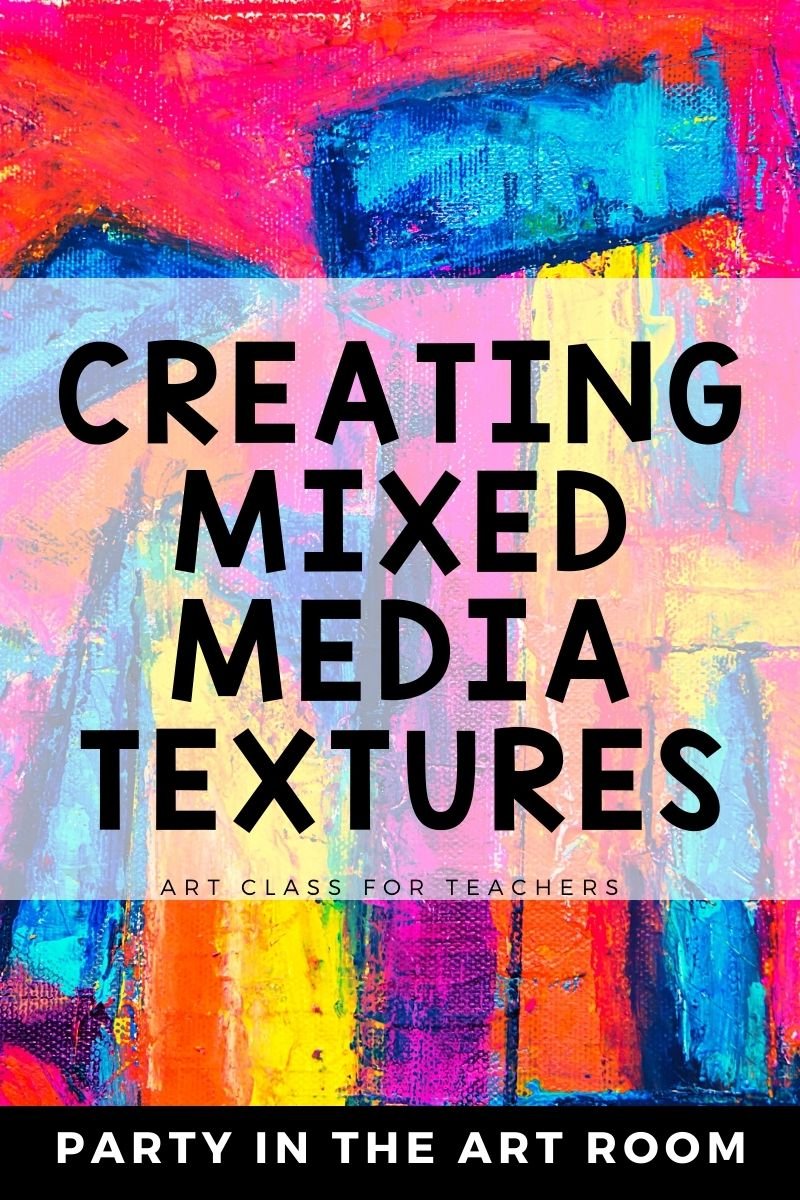How to Create Unique Textures in Mixed Media
If you’re interested in learning how to create unique textures in mixed media, you’ve come to the right place! I’m going to walk you through the process of mixing up a plethora of basic textures for your artwork. Remember to use these tips with your students and in your own practice. You will get return on your investment in this media by greater engagement in the learning process and retention of skills.
Texture Materials
There are hundreds of things you can use to create texture in your mixed media pieces. Some of my favorites include: lace, rubber, sandpaper, wires, buttons and other found objects. The simplest way to incorporate these materials into your work is by adding them directly on top of your paper or canvas. These textured materials are especially powerful when layered one over another because each material will add a different dimension or element to your piece. You can easily achieve a lot of depth in your art with just simple layers!
Here are the basic steps you can use to get started experimenting with this:
1. Prepare surface with medium first. Just think about how porous your surface is. Do you want it to absorb the paint you will use? If you need some absorption, use a thinner medium or none at all. If you do not want the paint absorbed, use something thicker.
2. Select 5-10 textures / elements that interest you (see below).
3. Put down base layer of color (paint, oil pastel, paper, etc.).
4. Add in textures one at a time. Let dry between layers as needed.
5. Seal if desired. (I usually didn't seal the student's work because of costs, but sometimes I would put a layer of glue with glitter over pieces like it was Mod Podge.)
Texture Tools
There are many tools that you can use when working with mixed media. Some of them are very common, like sandpaper, sponges and an artist’s brush. You may want to invest in some more specialized ones such as a texturizing brush or a rubber stamping block.
Here is a non-comprehensive list of tools you can use to create texture:
Plaster tools
Food and cake spatulas or cake icing knife
Fruit netting
Hair picks and hair combs
Cardboard tubing
Dried plat materials, dead flowers branches
Bubble wrap
String or ribbon
Yucca fiber
Credit cards, old hotel keys, AARP cards
Back brushes
Rubber stamps
Medical gauze
Corn cobs
Knitting needles
Squeegee
Chop sticks
Dish scrubbers and sponges
Cotton swabs
Droppers
Nail polish
Sandpaper
Shells
Tinsel
Bottle tops
Found fibers, mesh, lace etc.
Actual and Implied Texture
Texture is one of many tools that an artist has at their disposal. It can be used to compliment an image, or create a piece that stands on its own.
Actual, or physical, texture is that which is obvious, such as a pattern or cracked paint. It is present in paintings, and can be created using paint or with extra materials. This texture is actually and physically present. You can touch it and identify the way it feels.
Implied, or visual, texture can come from unexpected places and do just as much work for your piece. This texture is not actually present. You can't touch it and feel it. Implied texture can take on many forms, but is most commonly associated with brushwork or pencil marks that don’t actually touch one another. These seemingly separate lines act as visual texture through appearance alone – they create depth and surface in a painting even if you aren’t seeing paint applied directly on top of other areas. Another way to achieve implied texture is to use photographs or papers with textural elements printed on them (think: a photo of a brick wall).
Conclusion
I hope you’ve found some inspiration for creating your own artwork. My tips are by no means exhaustive, but they are a great starting point. As you go along creating more and more creative works, be sure to revisit these methods and tweak them as you see fit. And, don't forget to incorporate these into your teaching. You can learn alongside your students. I support that!
Below, you’ll find some items that I have personally used to create textures in my own art-making practice and with students. These are all fun examples of things that work well!
Also, be sure to check out the other posts and videos in this series on using mixed media with Art Class for Teachers.












